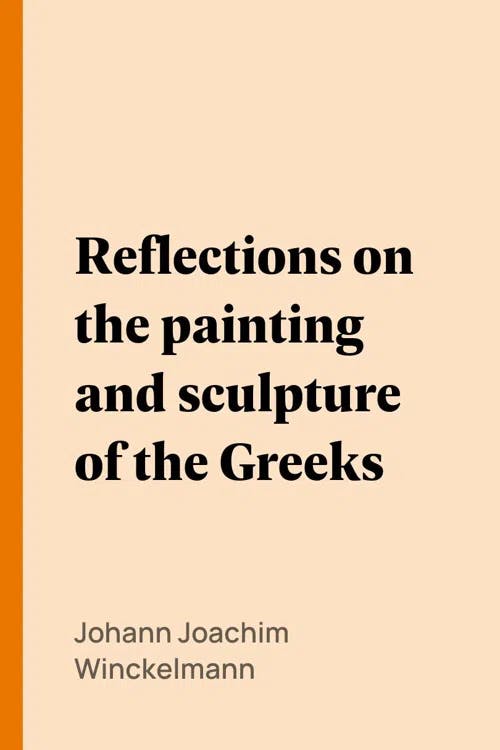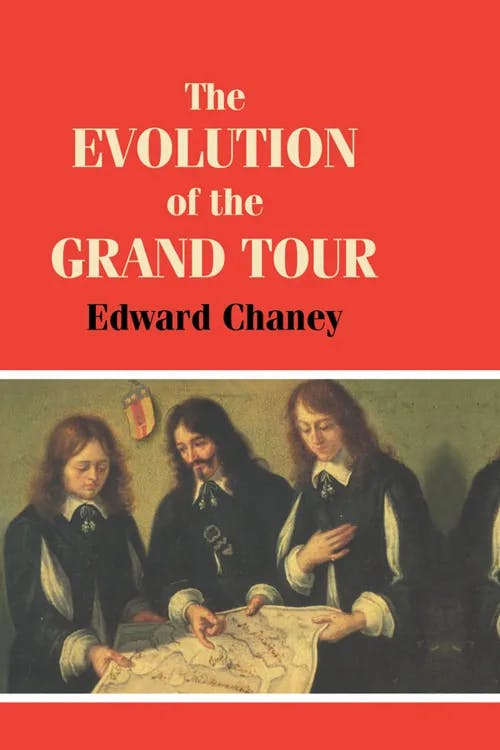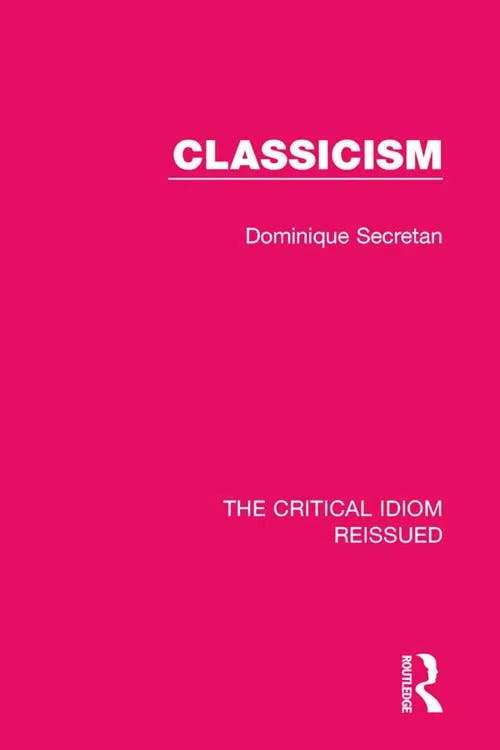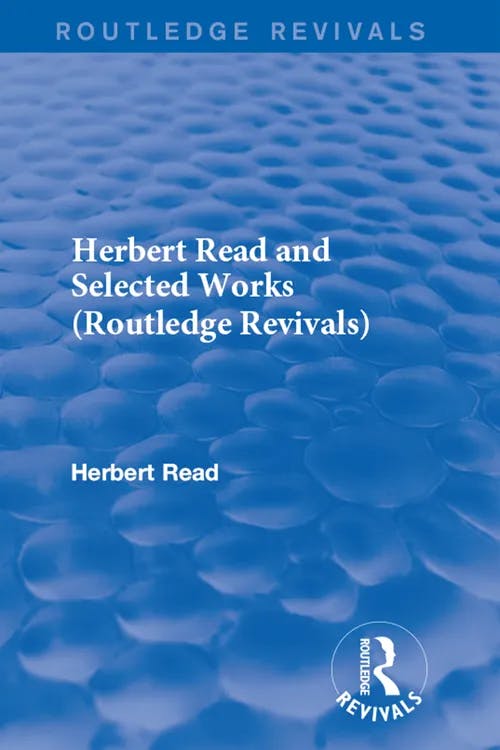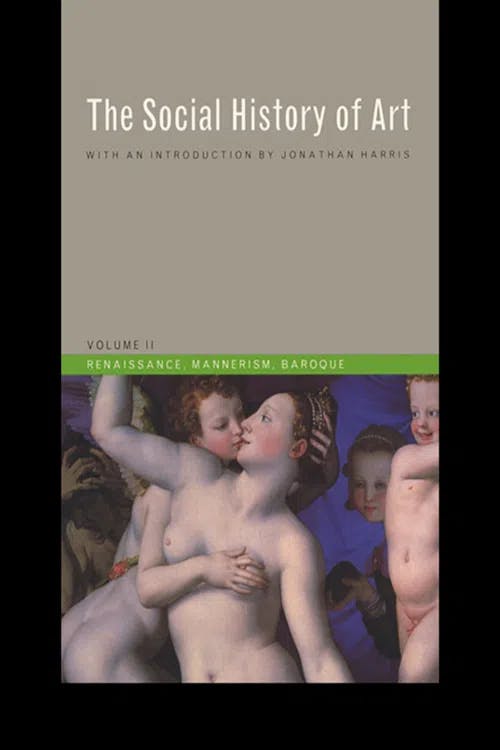What is Neoclassicism?
PhD, Media Arts (Royal Holloway, University of London)
Date Published: 13.12.2023,
Last Updated: 24.01.2024
Share this article
Defining neoclassicism
Neoclassicism was a cultural movement in the fine arts, literature, architecture, and philosophy that began in the 1760s and lasted almost a century. As its name suggests, neoclassicism represented the revival of the aesthetic and intellectual values of ancient Greece and Rome, from a period known as classical antiquity. Classicism is the term used to describe these aesthetic values in a broad sense, but neoclassicism refers to a specific iteration of these values; the assimilation of classicist cultural standards into the modern world.
Assigned retrospectively during the Renaissance, classicism was a term that came to describe the cultural impact of antiquity. This aesthetic was characterized by restraint, harmony, balance, precision, and polish. In literature, “classical” refers to the likes of Homer’s Iliad and Odyssey (c. 8th or 7th century BCE) or Aristophanes’ The Clouds (5th century BCE); in architecture, classicism was exemplified by the columned grandeur of the Greek Parthenon and the Roman Pantheon; and in philosophy, Socrates, Plato, and Aristotle set the intellectual tone with investigations into the human condition, the nature of knowledge and the world. Generally speaking, classicism was the artistic embodiment of idealism; the pursuit of perfection. Classical ideas like democracy, civilization, heroism, and morality were central to classicism in its original form, as well as neoclassicism and subsequent classicist art.
As we will come to see, there are several technological, intellectual, and political advancements that ushered in neoclassicism during the Age of Enlightenment. One significant factor was the theoretical work of Johann Joachim Winckelmann (1717–1768). Winckelmann was a German scholar and archeologist, known as the father of art history and credited with writing the first comprehensive account of the Greco-Roman art of antiquity. One of the most significant classicists, Winckelmann’s research and writing on Hellenism and the differences between ancient Greek and Roman culture had a significant influence on the revival of classicism in the latter part of the eighteenth century. To this end, in Reflections on the painting and sculpture of the Greeks, Winckelmann asserts that
This appeal to return to the aesthetic values and standards of classicism was, in part, what the neoclassicist movement responded to. The following study guide will outline the historical context of neoclassicism and its function and reception in the modern world.
The historical context of neoclassicism
Neoclassicism was an artistic feature of the 18th and 19th centuries and coincided with the Enlightenment, a period characterized by the prioritization of science, reason, and an orderly society with a constitutional government. But what was the trajectory of Western art up until this point, and what changed to usher in neoclassicism?
The late Middle Ages experienced manifold upheaval: political and environmental instability, pandemics and famine, conflict and civil war, and religious disorder. The result of these crises was the destabilization of European values and a rupture in the trajectory of Western civilization. These changes brought about new aesthetic tastes and modes of expression — collectively known as the Renaissance. The Renaissance, spanning the 14th–17th centuries, saw the first major classicist revival mostly due to the rediscovery and renewed interest in ancient Latin and Greek literature and philosophy. Scholars like Poggio Bracciolini (1380—1458) and Lorenzo Valla (1407—1457) extracted Neoplatonism and humanism from ancient texts, while artists like Leonardo Da Vinci (1452–1519) and Sandro Botticelli (c. 1445–1510) returned to the smooth, symmetrical naturalism of classical antiquity.
In the late Renaissance, however, new aesthetic styles began to emerge that rebelled from classicist harmony. Examples of these aesthetics can be found in the baroque and rococo art movements which directly preceded neoclassicism. These movements were highly ornamented, dramatic, playful, and hedonistic. With the emotionally poignant and dramatic work of Rembrandt (1606–1669), and the fun, flirtatious paintings of Jean-Honoré Fragonard (1732–1806), baroque and rococo marked a shift in the subject of art from religion and monarchy to secularism and aristocracy. Neoclassicism is often understood as a pushback against the extravagant and excessive style of baroque and rococo, instead intending to return to the standards of beauty set by antiquity.
The rise of neoclassicism — another return to the fashions of antiquity — was precipitated by the excavations of Herculaneum and Pompeii. In the early 18th century, the ancient city of Herculaneum was discovered, and by the mid-century the modern study of archeology had begun. Although Pompeii had been discovered earlier, excavations did not begin in earnest until 1748. Both ruins revealed Roman towns, buried for seventeen centuries under deep ash and rock as a result of the eruption of Mount Vesuvius. The grand temples, villas, frescoes, sculptures and artifacts that were found heightened intrigue around the art and civilization of classical antiquity. As Edward Chaney writes in The Evolution of the Grand Tour,
During the Enlightenment, young, upper-class men would travel to these classicist cites as a crucial piece of their aristocratic education, a tradition that became known as the “Grand Tour.” This established classical antiquity as the height of aesthetic taste and disseminated this taste across the Western world.
The discoveries of, and subsequent mass-interest in, these never-before-seen feats of classicist design coincided with Winckelmann’s in-depth study of antiquity and his appeal to return to the values of the ancient world. On the subject of what artists of the early modern period had to learn learn from classicism, Winckelmann asserts,
[With] his hand and senses directed by the Greek rule of beauty, the modern artist goes on the surest way to the imitation of Nature. The ideas of unity and perfection, which he acquired in meditating on antiquity, will help him to combine, and to ennoble the more scattered and weaker beauties of our Nature. Thus he will improve every beauty he discovers in it, and by comparing the beauties of nature with the ideal, form rules for himself. (1765 [2020])
Here, Winckelmann proposes that, while accurate imitation was a strength of classicist art, the ancients had a particular way of observing and depicting the nature of objects and bodies in the world, one that imbued them with reverent beauty. The result was art that exhibited a sense of idealism: a smooth and symmetrical perfection that should be the aspiration of all artists.
These are some of the main factors that precipitated neoclassicism. As a result of these massive societal shifts, late Renaissance and Enlightenment art moved from an expressive, maximalist display of moral abandon, to an ancient sense of aesthetic discipline and perfect form.
An example of neoclassicism
One artwork that is considered emblematic of the neoclassical movement is Anton Raphael Mengs’ (1728–1779) Parnassus (1761). Originally, Mengs painted in the rococo style, but Parnassus marks a departure, ushering in neoclassicism as the new dominant aesthetic. Mengs was highly influenced by Winckelmann, who was a friend and a subject of his portraits. Mengs and Winckelmann were both deeply affected by the aesthetic of ancient classicism that revealed itself in the excavation of Herculaneum and Pompeii, and Winckelmann’s insistence on the superiority of classical tastes was detectable in Mengs’ style. In turn, Stanley Appelbaum notes that Mengs “guided Winckelmann through the effervescent Roman art scene, and they collaborated on essays about Greek art” (Winckelmann’s Images from the Ancient World, 2013).
Largely based on Raphael's frescoes in the Vatican — important pieces of work to come out of the Renaissance — Parnassus features Apollo, the sun god, surrounded by various Muses, their virtues indicated by the objects they hold. These figures stand in a dusty clearing, where a spring flows from beneath Apollo’s feet, set against a lush landscape behind them. Apollo stands in the center, slightly elevated, while the Muses are arranged more or less in symmetry, either side of him. There is not a lot of movement in the composition; these figures are well spaced, poised, and static, evoking a sculptural tableau. This composition shows the restraint, balance, and simplicity of classicism rather than the busy, impassioned paintings of baroque and rococo. This contemporary rendering of the classical style was pioneering for the time, and initiated neoclassicism — first in Italy and then farther afield.
This aesthetic shift was partially made to advance the moral purpose of art. Rather than being a monarchic tool for religious propaganda, or a celebration of aristocratic hedonism and the lavish life of the upper classes, neoclassicism hoped to retrieve the refined moral codes of ancient Greece and Rome. The priority of austerity, rationality, heroism, and democracy became a way to overthrow the lifestyle and values of the monarchy and the aristocracy. Parnassus exemplifies this effort. The intellectual and artistic virtues of science, philosophy, and music — activities exhibited by Apollo and the Muses — are clearly held in high regard, and the geometric symmetry of the figures and their composition embodies what Winckelmann describes as “a noble simplicity and sedate grandeur in Gesture and Expression” alive in classical works (1765 [2020]).
Criticism of neoclassicism
As with any popular cultural movement, neoclassicism had its adversaries. One came in the form of Romanticism. Where neoclassicism responded to the style of the baroque and rococo, Romanticism, in turn, was a response to, and a push against, neoclassicist art. Romanticism opposed many of the ideas of the Enlightenment, including the contributions of neoclassicism. Neoclassicism celebrated the reverence of humanity and the triumph of civilization over nature. Romanticism, on the other hand, saw humans as an essential component of the natural world. So, where neoclassicism idealized the human form, rendering human bodies with restraint and balance, Romanticism reveled in the unruly chaos of nature and saw an essential unity between humanity and the natural world. Where neoclassicism advocated discipline and control in its art, Romanticism advocated for artistic freedom. Rather than the smooth aesthetic of classicism, Romantic art featured exaggerated perspectives and bold brush strokes, creating a sense of spontaneity and expression.
In Classicism, Dominique Secretan describes a way of looking at the overarching position of classicism and Romanticism, and the differences between the two: through two different approaches to the “human condition” (2017). Secretan writes:
And then there is the second approach, which asks,
What has the past taught us? what do we share with the generations that have gone before us, with the nations around us? How best can we sum up what was, is and perhaps will be? what is unchanging Nature really like? We have here a mode of thinking more rational, more synthetic, more static, which tends to systematize, to accept what is of proven value, to make use of forms handed down from generation to generation […]. [W]e shall call this second attitude classical. (2017)
This aesthetic debate between classicism and Romanticism extended far beyond the tensions of neoclassical art and into modernity. In literature and poetry, modernist figures like James Joyce (1882–1941) and T.S. Eliot (1888–1965) are associated with the same perseverance of classical values that brought about neoclassicism. Those avant-garde art movements that more closely adhere to the values of Romanticism — like surrealism — questioned the modern cultural significance of classicist ideas, with art critic Herbert Read writing in his 1936 publication, Surrealism,
Classicism, let it be stated without further preface, represents for us now, and always represented, the forces of oppression. Classicism is the intellectual counterpart of political tyranny. It was so in the ancient world and in the medieval empires; it was renewed to express the dictatorships of the Renaissance and has ever since been the official creed of capitalism. Wherever the blood of martyrs stains the ground, there you will find a doric column or perhaps a statue of Minerva. (1936)
As we can see, in its most extreme sense, Romanticism set out to expose the oppressive and reductive nature of classicism. To those who upheld the values of Romanticism, neoclassicism perpetuated an overbearing cultural standard that corresponded to a shameful political history. Elsewhere, in a less condemnatory analysis, Read writes:
Even some modern critics who hold the classical art of antiquity in high regard find issues with neoclassicism. As Arnold Hauser proposes,
Whether neoclassicism is considered dangerous and derivative — a significant perpetuator of a tyrannical set of aesthetic ideas — or merely a collective set of standards and values, it cannot be denied that its significance has been a catalyst for important conversations and artworks since.
Concluding thoughts
Despite the problems that have been identified with classicism and neoclassicism, the prevalence of classicist ideals and the unique beauty they produce is of the utmost importance in the study of art. Neoclassicism displays the perennial values of classicism; the impulse we have to be a part of something bigger than ourselves; a part of the ancient world, of a larger society, of a sense of fixed morals. Classicism continues to provide us with a connection to the past, a framework for us to organize and structure our thoughts and sensations, and a means for us to perceive and appreciate the symmetry, stillness, and perfection around us.
Throughout history, the cultural pendulum has swung between iterations of classicist and non-classicist art. Neoclassicism marks an important moment in the rise of classicism; a time when more of the ancient Western world was discovered, examined, and appreciated than perhaps ever before.
Further reading on Perlego
Philosophical Connections: Akenside, Neoclassicism, Romanticism (2022) by Chris Townsend
The Ideology of Classicism (2011) by Nicolas Wiater
Formation of English Neo-Classical Thought (2015) by James William Johnson
Classicism & Romanticism: with other studies in art history (2022) by Frederick Antal
Dramatic Essays of the Neoclassic Age (2019) Henry Hitch Adams, Baxter Hathaway
Bibliography
Chaney, E. (2014) The Evolution of the Grand Tour. Taylor and Francis. Available at: https://www.perlego.com/book/1663115/the-evolution-of-the-grand-tour-angloitalian-cultural-relations-since-the-renaissance-pdf
Hauser, A. (2005) Social History of Art, Volume 2. 3rd edn. Taylor and Francis. Available at: https://www.perlego.com/book/1603681/social-history-of-art-volume-2-renaissance-mannerism-baroque-pdf
Read, H. (2022) Herbert Read and Selected Works. Taylor and Francis. Available at: https://www.perlego.com/book/3567109/herbert-read-and-selected-works-routledge-revivals-pdf
Read, H. (ed.) (1936) Surrealism. Faber and Faber.
Secretan, D. (2017) Classicism. Taylor and Francis. Available at: https://www.perlego.com/book/1488946/classicism-pdf
Winckelmann, J. J. (2013) Winckelmann’s Images from the Ancient World. Edited by S. Appelbaum. Dover Publications. Available at: https://www.perlego.com/book/110613/winckelmanns-images-from-the-ancient-world-greek-roman-etruscan-and-egyptian-pdf
Winckelmann, J. J. (2020) Reflections on the painting and sculpture of the Greeks. Perlego. Available at: https://www.perlego.com/book/1850350/reflections-on-the-painting-and-sculpture-of-the-greeks-pdf
PhD, Media Arts (Royal Holloway, University of London)
Aoiffe Walsh has a PhD in Media Arts from Royal Holloway, University of London. With a background in film studies and philosophy, her current research explores British literary modernism, with a particular focus on surrealism between the wars. She has lectured and published pieces on documentary and film theory, film history, genre studies and the avant-garde.

